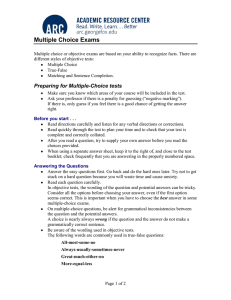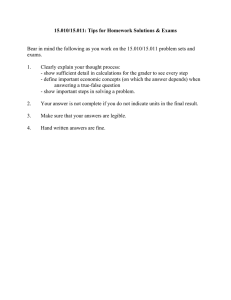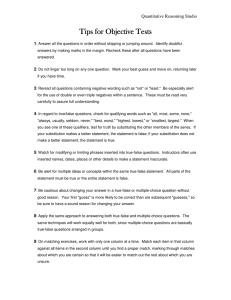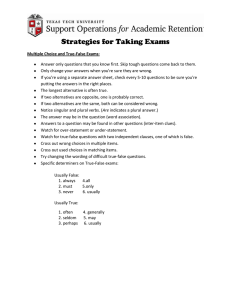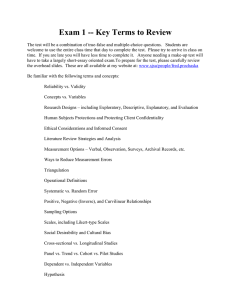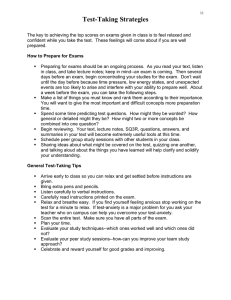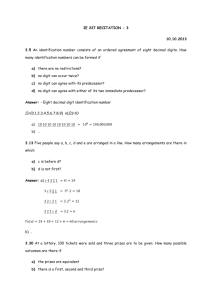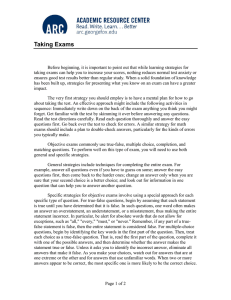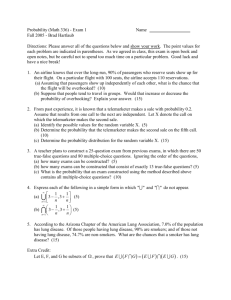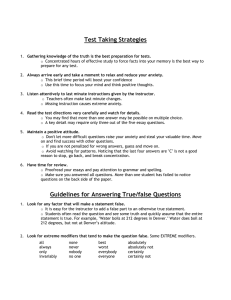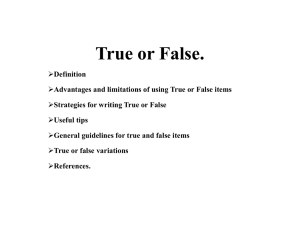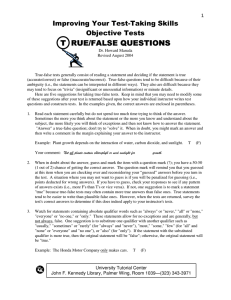University of Puget Sound Multiple Choice Exams
advertisement
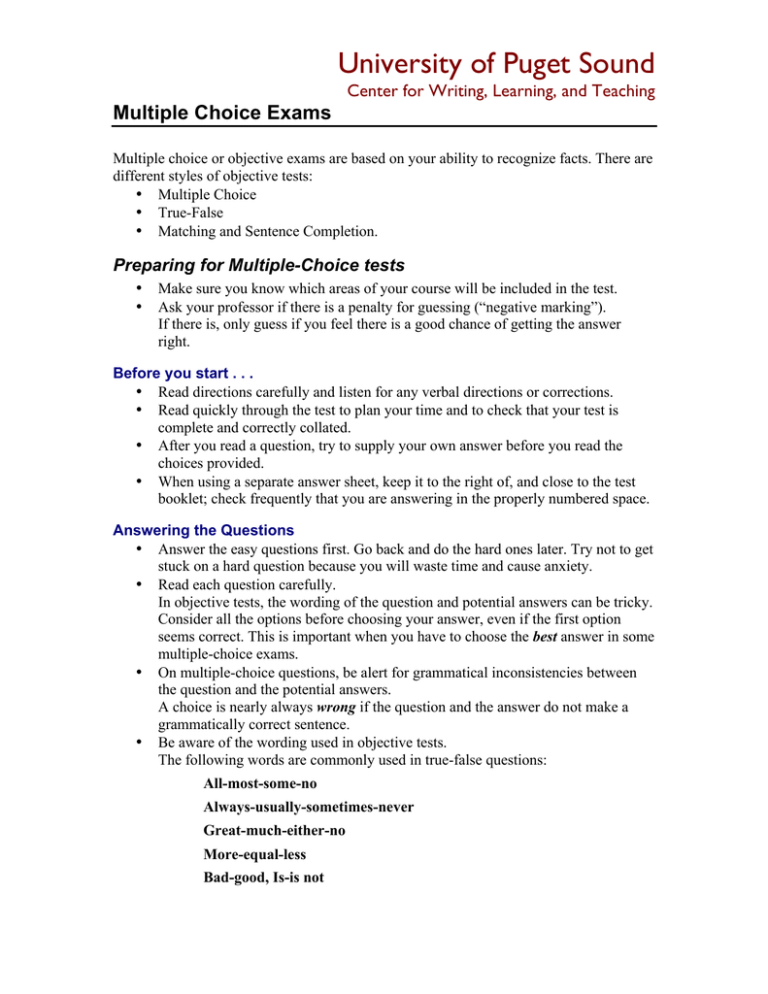
University of Puget Sound Center for Writing, Learning, and Teaching Multiple Choice Exams Multiple choice or objective exams are based on your ability to recognize facts. There are different styles of objective tests: • Multiple Choice • True-False • Matching and Sentence Completion. Preparing for Multiple-Choice tests • • Make sure you know which areas of your course will be included in the test. Ask your professor if there is a penalty for guessing (“negative marking”). If there is, only guess if you feel there is a good chance of getting the answer right. Before you start . . . • Read directions carefully and listen for any verbal directions or corrections. • Read quickly through the test to plan your time and to check that your test is complete and correctly collated. • After you read a question, try to supply your own answer before you read the choices provided. • When using a separate answer sheet, keep it to the right of, and close to the test booklet; check frequently that you are answering in the properly numbered space. Answering the Questions • Answer the easy questions first. Go back and do the hard ones later. Try not to get stuck on a hard question because you will waste time and cause anxiety. • Read each question carefully. In objective tests, the wording of the question and potential answers can be tricky. Consider all the options before choosing your answer, even if the first option seems correct. This is important when you have to choose the best answer in some multiple-choice exams. • On multiple-choice questions, be alert for grammatical inconsistencies between the question and the potential answers. A choice is nearly always wrong if the question and the answer do not make a grammatically correct sentence. • Be aware of the wording used in objective tests. The following words are commonly used in true-false questions: All-most-some-no Always-usually-sometimes-never Great-much-either-no More-equal-less Bad-good, Is-is not • • • • • On true-false questions, be alert for qualifying words such as: “all”, “none”, “always” and “never”, which generally make a statement false; and “most”, “some”, “usually” and “seldom”, which tend to make a statement true. In true-false tests, be alert for multiple ideas or concepts within the question. All parts of the statement must be true or the entire statement is false. If you really can’t make a perfect match between the question and the answer, choose the alternative that is more nearly true than the other choices. Accept the question at face value. Don’t read anything in or out of the question. Reading too much into a question usually results in a wrong answer. Do not change your original answer. In most cases your intuition is correct. Only change your answer if you have a very strong hunch that it’s wrong, or you find new evidence.
